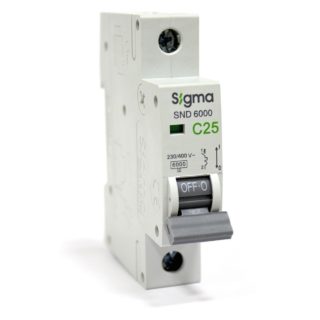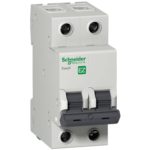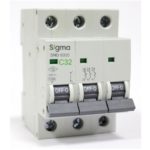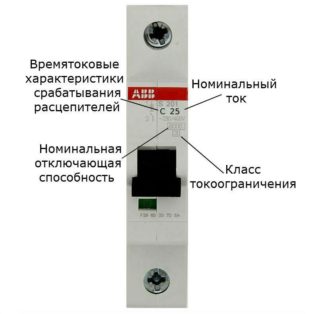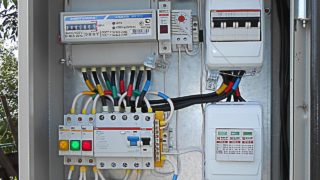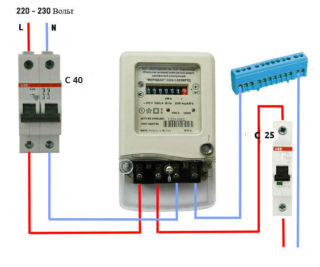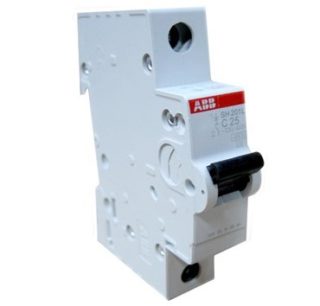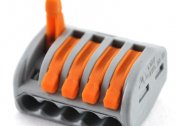The 25 Amp modular machine performs several functions in electrical circuits. Firstly, it provides their protection during overloads and short circuits. Secondly, with its help, linear circuits are connected to and disconnected from loads. They are called modular because the devices are manufactured in the form of single-pole blocks, from which complex multipolar devices are assembled. Understanding the purpose of automatic machines at 25 Amps will help familiarization with their technical characteristics.
General specifications and marking
Electrical equipment operating in power circuits is represented by technical specifications and standard marking. The basis is a number of parameters that determine the operation of an automatic device.
Main characteristics
The functionality of any protective device is determined by:
- rated current;
- switching or disconnecting ability;
- current limit class;
- time-current characteristics of electromagnetic and thermal releases.
Together, these indicators fully characterize it, and some of them are used in the factory labeling.
Extra options
 Additional instrument parameters include:
Additional instrument parameters include:
- permissible power in the load that the machine is able to withstand;
- type of switched voltage (220 or 380 Volts);
- number of poles.
Unlike the main indicators relating directly to the circuit breaker, these parameters characterize the device for its operation in the circuit serviced. According to them, it is possible to distinguish a three-phase 25 Ampere machine, for example, from its single-phase analogue.
In accordance with the number of poles of the device are:
- unipolar;
- bipolar;
- three-pole and four-pole.
- Bipolar
- Three-pole
- Four pole
Each of them has an appropriate number of inlet and outlet contacts and is used for specific purposes. Single-pole machines are installed in 220 Volt phase supply circuits (the earth core is not involved, because it is laid around the switch). Two-pole machines 25 Amperes are needed for simultaneous switching of phase and earth wires and are used to organize input into the apartment.
More functional 3-pole products are used in three-phase circuits (without a zero core). A 4-pole device is selected when it is necessary to switch three phases and zero.
PUE allows the use of machine poles to control the currents of various linear loads. A situation is not ruled out when a phase from one line is brought to one of them, and from the second to the other.
Marking
The marking applied to the C25 machine informs about the following device parameters:
- The symbol "C" means a current characteristic indicating the time delay of the trip of the trip chain.
- Figures 25 - rated current at which the machine operates for a long time without overloads (in normal mode).
Below the marking on the front panel of the device are symbols within which indicate the class of current limit and rated breaking capacity.
Description of the main parameters
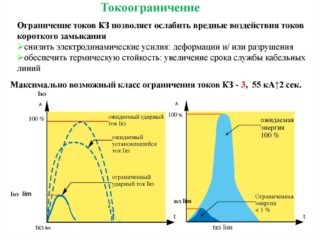 The rated current of any (including dual) machine at 25 Amps is indicated in its marking. It means the value at which the device works for a long time without shutting down. This parameter is entered taking into account an average air temperature of 30 ° C. In the case of its decrease, it will increase, and with an increase, on the contrary, it will decrease.
The rated current of any (including dual) machine at 25 Amps is indicated in its marking. It means the value at which the device works for a long time without shutting down. This parameter is entered taking into account an average air temperature of 30 ° C. In the case of its decrease, it will increase, and with an increase, on the contrary, it will decrease.
The switching ability of the machine characterizes its ability to instantly turn off at short-circuit currents of a certain value. This indicator for household appliances takes typical values of 4.5 thousand or 6 thousand amperes. In industrial designs, it is indicated specifically (without bordering with a square frame). The higher the switching ability of the model, the more quality the machine is considered and the more expensive it is.
The current limit class indicates how long the arc that arises when switching high currents is extinguished. There are 3 classes of switches that differ in this parameter:
- In the third grade, the arc goes out in 3-5 milliseconds.
- In the devices of the second group, it takes 5-10 milliseconds to extinguish it.
- For devices of the first class, the restriction is not standardized. The process usually takes 10 milliseconds or more.
Class marking is applied to the case in the form of numbers 3 or 2, placed in a frame.
In any machine, two releases are used as actuators. One of them (thermal type) is made as a bimetallic plate, and the other is electromagnetic, which is a maximum current relay. The first one turns off the device during a prolonged excess of current power in a section of the line protected with it. The electromagnetic release is triggered by a short circuit in the circuit. The magnitude of the currents at which the machine is turned off, as well as time delays, are called its time-current characteristics.
Scopes and inclusion scheme
Bipolar and 4-pole circuit breakers for 380 Volts 25 Amps are most often installed at the input of the serviced object, up to the counter.
For input devices, the permissible power is not more than 5.5 kilowatts (kW) for a single-phase network and not higher than 9.5 kW for a 3-phase automatic machine 25A.
Unipolar and bipolar devices are allowed to be used in power circuits of individual consumers with power up to 5.5 kW, provided that the input circuit breaker has a higher current rating. Their 3-pole and 4-pole analogs can be installed if necessary, to protect current collector circuits with a capacity of up to 9.5 kW (electric stoves and similar heating appliances). Before installing the machine on 25A 380V, it is necessary to calculate the permissible load, summing up the indicators for individual consumers. It is important to take into account the thickness of the lead wires. The cable cross-section is determined by the tables in which the desired value is selected in accordance with the operating current of this device.
According to the PUE, protective devices, in the designation of which the letter “C” is present, are calculated according to the formulas for the averaged characteristics and are considered universal. They can work in a network to which various types of loads are connected (from a light bulb to an electric motor).
Wiring diagram
When connecting any machine, it is important to learn the following rule: the wires to it are always connected from the upper terminals, and are removed from the bottom and go further to the load. There are exceptions to this rule; but then on the case of the device is given its special switching circuit.
In a situation when in addition to the numbers on the circuit or on the contacts of the machine there is a letter N, a zero bus is connected to these terminals. If there is no designation on the case, it is connected to the contacts indicated by the last digits. Phase and neutral conductors are always connected on one side.
It is important to know how to turn on the device in the general power supply circuit. It is always installed before the RCD, because for normal operation it requires a phase conductor and earth, and the linear machine commutes one phase. However, they are usually mounted on a common din rail located in the control cabinet next to the meter.
Manufacturers and brands
Before you select and buy a C25 circuit breaker, you should familiarize yourself with the companies that represent them and the price. Well-known appliance manufacturers:
- The Swedish-Swiss company ABB, rightfully considered the leader in the market of electrical products of this class.
- Circuit breakers from Legrand (France) are not inferior in quality to the previous brand, the cost is approximately comparable in magnitude.
- The products of another French company (Schneider Electric) are well known to the domestic consumer, who speaks well of this product.
The price of a C25 assault rifle in the domestic market ranges from 100 r. up to 100 thousand rubles depending on the number of poles, company and brand.
